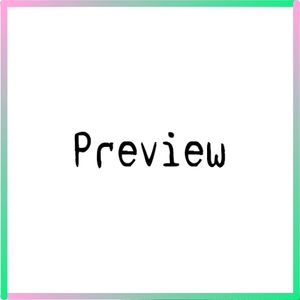In the colorful world of education, where creativity knows no bounds, classroom displays play a crucial role. They make our learning environment vibrant and exciting. But have you ever thought about how fonts can make a difference in those displays? In this article, we’ll explore the 15 best fonts for classroom displays, focusing on why each font is perfect and how to use them effectively. Whether you’re a student or a teacher, these fonts can elevate your classroom experience.
The Basics of Typography
What is Typography?
Typography is the art and science of arranging type to make language visible. It involves selecting the right font, adjusting its size, spacing, and color to ensure that text is not only readable but also aesthetically pleasing.
The Role of Fonts in Design
Fonts are like the voices of your written words. They can convey emotions, set the tone, and make the content more engaging. In the context of classroom displays, fonts can turn plain information into something exciting.
Importance of Readability
Before we dive into our list of fonts, let’s remember that readability is paramount. Regardless of how creative a font is, it must be easy to read for students of all ages.
The Top 15 Fonts for Classroom Displays
Font 1: Comic Sans MS

Why it’s great for classroom displays: Comic Sans MS is friendly and approachable. It’s like the class clown of fonts, making learning feel fun and lighthearted.
How to use Comic Sans effectively: Use it for headings, announcements, or anything that needs a touch of playfulness.
Font 2: KG Primary Penmanship

Why it’s perfect for young learners: This font mimics handwriting, which can be incredibly helpful for young students as they learn to write.
Examples of classroom displays with KG Primary Penmanship: Try using it for alphabet displays or motivational quotes.
Font 3: Chalkduster
Why it gives a chalkboard feel: Chalkduster brings a nostalgic classroom vibe to your displays, perfect for a touch of nostalgia.
Tips for using Chalkduster in displays: Use it for subject titles or to create a blackboard effect on whiteboards.
Font 4: D’Nealian Manuscript
How it aids handwriting practice: If you want to encourage neat handwriting, D’Nealian Manuscript is your friend.
Incorporating D’Nealian Manuscript in classroom displays: Use it for name tags or posters focused on penmanship.
Font 5: Open Dyslexic

Making learning accessible with Open Dyslexic: This font is designed to improve readability for those with dyslexia, promoting inclusive learning.
Designing inclusive classroom displays: Use Open Dyslexic alongside standard fonts to create an inclusive learning environment.
Font 6: Century Gothic

Modern and clean aesthetics: Century Gothic brings a sleek and modern look to your displays, making them visually appealing.
Enhancing visual appeal with Century Gothic: Use it for project titles, and pair it with colorful visuals.
Font 7: Garamond

Classic elegance for academic displays: Garamond exudes a sense of tradition and scholarly elegance.
Creating a sophisticated atmosphere with Garamond: Use it for quotes or historical displays.
Font 8: Arial

Simplicity and clarity: Arial is known for its clarity, making it a top choice for clean and straightforward communication.
Using Arial for clear communication in displays: Perfect for informative posters and labels.
Font 9: Tahoma

Combining style and readability: Tahoma is both stylish and easy to read, making it versatile for various display purposes.
Effective use of Tahoma in classroom displays: Try it for event announcements or creative projects.
Font 10: Raleway

Contemporary and versatile: Raleway offers a modern touch that suits various classroom themes.
Incorporating Raleway for a modern touch: Use it for tech-related displays or contemporary classroom designs.
Font 11: Helvetica Neue

Universally recognized and legible: Helvetica Neue is a widely used and easily readable font.
Maximizing impact with Helvetica Neue: Use it for important information that you want everyone to notice.
Font 12: Times New Roman

A classic choice for formal displays: Times New Roman is a classic font that adds a touch of formality to your displays.
When to opt for Times New Roman: Perfect for certificates or historical displays.
Font 13: Verdana

Clarity on digital screens: Verdana is designed for digital readability, making it a top choice for electronic displays.
Adapting Verdana for digital classroom displays: Use it for presentations or digital bulletin boards.
Font 14: Gill Sans

A balance of tradition and modernity: Gill Sans offers a harmonious blend of classic and contemporary.
How to integrate Gill Sans effectively: Use it for subject titles or project headings.
Font 15: Roboto

Google’s versatile font: Roboto is a flexible and modern font designed for digital environments.
Harnessing Roboto’s flexibility in classroom displays: Ideal for digital presentations and interactive displays.
Choosing the Right Font for Your Classroom Display
Consider your audience
Think about who will be viewing your displays. Is it for young children, teenagers, or adults? Choose fonts that resonate with your audience.
Aligning fonts with the subject matter
Consider the subject matter of your display. Fonts can convey the theme and mood of your content.
Balancing creativity and legibility
While creativity is essential, ensure that your chosen font maintains readability, even from a distance.
Tips for Designing Engaging Classroom Displays
Incorporating colors and visuals
Use colors and visuals that complement your chosen font. A well-coordinated color scheme can enhance the overall impact.
Maintaining consistency
Stick to a consistent font and style throughout your classroom displays. Consistency creates a cohesive and visually appealing environment.
Getting feedback from students
Don’t hesitate to ask your students for feedback on the classroom displays. Their input can help you refine your design choices.
Conclusion
In conclusion, fonts have the power to transform your classroom displays, making them engaging and effective tools for learning. Whether you prefer a playful Comic Sans or a timeless Garamond, choose fonts that align with your educational goals. Experiment, have fun, and create displays that inspire and captivate your fellow students or learners. Typography is your creative playground—make the most of it!
